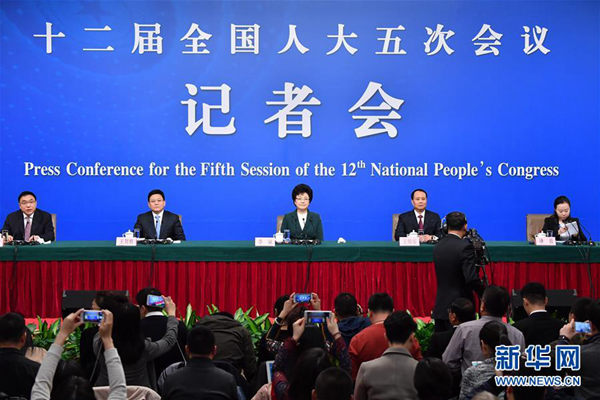China in national move to bring up second child
CRI, March 12, 2017 Adjust font size:
China's universal two-child policy has witnessed an "initial success" in 2016, with the largest annual number of newborns since 2000, the policy accords "completely" with its original prediction, a senior health official said Saturday.
Wang Pei'an, deputy minister of the National Health and Family Planning Commission (NHFPC), made the remarks at a news conference on the sidelines of the fifth session of China's 12th National People's Congress in Beijing.
Wang predicted the trend will continue in the coming years through 2020, during which the annual number of newborns will range between 17 million and 19 million.
This means the number of newborns will, at the very least, remain flat and could grow by as many as 2 million annually compared to the average between 2010 and 2015.
"We are very optimistic," Wang said.
The two-child policy
China allowed all married couples to have two children in 2016. This follows an earlier policy easing in 2013 that allowed couples to have a second child if either parent was an only child.
The latest change ended the one-child policy implemented in the late 1970s to rein in the surging population.
The policy shift was in response to China's rapidly aging population.
